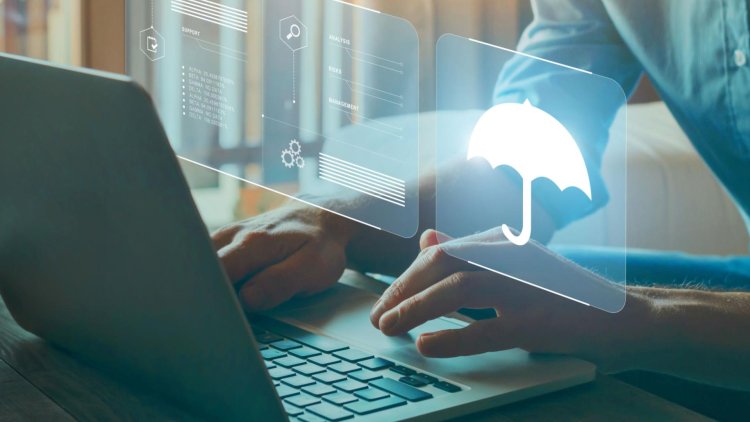Cyber Attacks Rapidly Rise During the Pandemic
The COVID-19 pandemic has transformed numerous aspects of our lives, from the way we work to how we interact socially. One significant shift has been the rapid increase in cyber attacks.

The COVID-19 pandemic has transformed numerous aspects of our lives, from the way we work to how we interact socially. One significant shift has been the rapid increase in cyber attacks. As the world grappled with the pandemic, cybercriminals seized the opportunity to exploit vulnerabilities in our digital infrastructure. This blog explores the factors behind the surge in cyber attacks during the pandemic, the various types of attacks that have become more prevalent, and strategies to enhance cybersecurity.
The Surge in Cyber Attacks During the Pandemic
The pandemic forced a global shift towards remote work, accelerated digital transformation, and increased dependence on online services. As organizations scrambled to adapt, they often overlooked cybersecurity, creating a fertile ground for cybercriminals. According to a report by Cybersecurity Ventures, cybercrime is projected to cost the world $10.5 trillion annually by 2025. This rise is directly correlated with the pandemic's impact on digital security.
Factors Contributing to the Increase in Cyber Attacks
-
Remote Work Vulnerabilities
The shift to remote work led to a dramatic increase in the use of home networks and personal devices for business purposes. Many organizations lacked robust remote work policies or the necessary infrastructure to secure these new environments, leaving them exposed to cyber threats. -
Increased Online Activity
As people stayed home, online activities surged, from e-commerce and online banking to telehealth services. This increase in digital transactions provided more opportunities for cybercriminals to exploit weaknesses in security systems. -
Rapid Digital Transformation
Organizations rapidly adopted new technologies and digital platforms to keep operations running. This haste often meant that cybersecurity measures were not adequately integrated or tested, creating additional vulnerabilities. -
Exploitation of Pandemic-Related Fears
Cybercriminals capitalized on the pandemic's fear and uncertainty by launching phishing attacks and distributing malware disguised as COVID-19 information. These tactics preyed on individuals' concerns about their health and financial well-being.
Types of Cyber Attacks on the Rise
Several types of cyber attacks saw a significant increase during the pandemic. Understanding these threats is crucial for developing effective countermeasures.
1. Phishing Attacks
Phishing attacks involve tricking individuals into revealing sensitive information, such as login credentials or financial details, by pretending to be a trustworthy entity. During the pandemic, phishing emails often mimicked communications from health organizations or financial institutions, making them more convincing.
- Example: An email claiming to offer a COVID-19 vaccine appointment but requiring personal details to proceed.
2. Ransomware Attacks
Ransomware attacks involve encrypting a victim's data and demanding payment for its release. The pandemic saw an uptick in ransomware attacks, with cybercriminals targeting healthcare institutions, municipalities, and businesses that were under pressure to maintain operations.
- Example: A ransomware attack on a hospital's IT systems, disrupting patient care and demanding a ransom for data recovery.
3. Malware and Spyware
Malware and spyware are malicious software designed to damage or infiltrate systems without the user’s consent. The pandemic's increased online activity provided more opportunities for these threats to spread.
- Example: Spyware installed through a fake COVID-19 tracking app that secretly monitors and transmits user activity.
4. DDoS Attacks
Distributed Denial of Service (DDoS) attacks involve overwhelming a network or server with traffic to render it unusable. During the pandemic, these attacks targeted organizations struggling to maintain online services, exacerbating the impact of the crisis.
- Example: A DDoS attack on a government website providing pandemic-related updates, disrupting access to critical information.
5. Data Breaches
Data breaches occur when unauthorized individuals access sensitive data. The surge in remote work and increased reliance on cloud services during the pandemic led to a higher risk of data breaches.
- Example: A data breach at a telehealth provider exposing patient records due to insufficient security measures.
Strategies to Enhance Cybersecurity
In light of the increased cyber threats during the pandemic, it is essential for organizations and individuals to implement robust cybersecurity measures. Here are some strategies to enhance protection against cyber attacks:
1. Strengthen Remote Work Security
Organizations should implement secure remote work policies, including the use of Virtual Private Networks (VPNs) and multi-factor authentication (MFA). Ensuring that employees use company-approved devices and regularly updating software can also mitigate risks.
- Action: Provide training for employees on recognizing phishing attempts and securing their home networks.
2. Regularly Update and Patch Systems
Keeping software and systems up to date with the latest security patches is crucial in protecting against vulnerabilities. Cybercriminals often exploit known vulnerabilities that could have been addressed through updates.
- Action: Establish a routine schedule for system updates and patches, and ensure all devices are included.
3. Implement Comprehensive Cybersecurity Policies
Develop and enforce cybersecurity policies that address various aspects of digital security, including data protection, incident response, and employee training. Regularly review and update these policies to adapt to evolving threats.
- Action: Conduct regular cybersecurity audits and simulations to test the effectiveness of your policies.
4. Educate Employees and Users
Education and awareness are key components of cybersecurity. Regular training sessions can help employees recognize and respond to cyber threats, reducing the likelihood of successful attacks.
- Action: Create an ongoing cybersecurity awareness program that includes phishing simulations and training modules.
5. Utilize Advanced Security Technologies
Invest in advanced security technologies, such as endpoint detection and response (EDR) systems, intrusion detection systems (IDS), and artificial intelligence (AI)-powered threat detection tools. These technologies can provide real-time protection and early detection of potential threats.
- Action: Evaluate and implement security solutions that align with your organization's specific needs and risk profile.
6. Develop a Response Plan
Having a well-defined incident response plan is essential for quickly addressing and mitigating the impact of cyber attacks. This plan should include procedures for detecting, containing, and recovering from attacks, as well as communication protocols.
- Action: Regularly test and update your incident response plan to ensure its effectiveness during a crisis.
The COVID-19 pandemic has undeniably accelerated the rise of cyber attacks, driven by increased remote work, heightened online activity, and rapid digital transformation. Understanding the various types of cyber threats and implementing robust cybersecurity measures are crucial for protecting sensitive information and maintaining operational resilience.
By strengthening remote work security, regularly updating systems, educating employees, utilizing advanced technologies, and developing a comprehensive response plan, organizations can better safeguard themselves against the ever-evolving landscape of cyber threats. As the world continues to navigate the challenges of the pandemic and beyond, prioritizing cybersecurity will remain a critical component of organizational success and resilience.
What's Your Reaction?



















